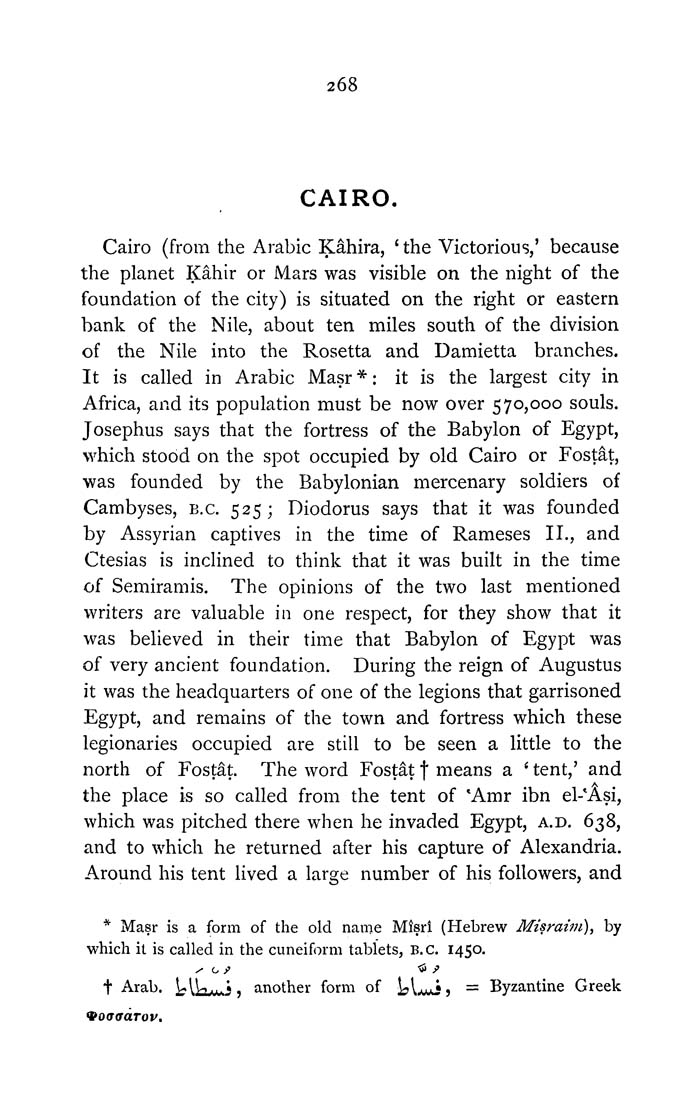CAIRO.
Cairo (from the Arabic Kahira, 'the Victorious,' because
the planet Kahir or Mars was visible on the night of the
foundation of the city) is situated on the right or eastern
bank of the Nile, about ten miles south of the division
of the Nile into the Rosetta and Damietta branches.
It is cafled in Arabic Masr"^: it is the largest city in
Africa, and its population must be now over 570,000 souls.
Josephus says that the fortress of the Babylon of Egypt,
which stood on the spot occupied by old Cairo or Fostat,
was founded by the Babylonian mercenary soldiers of
Cambyses, B.C. 525; Diodorus says that it was founded
by Assyrian captives in the time of Rameses 11., and
Ctesias is inclined to think that it was built in the time
of Semiramis. The opinions of the two last mentioned
writers are valuable in one respect, for they show that it
was believed in their time that Babylon of Egypt was
of very ancient foundation. During the reign of Augustus
it was the headquarters of one of the legions that garrisoned
Egypt, and remains of the town and fortress which these
legionaries occupied are still to be seen a little to the
north of Fostat. The word Fostat f means a ' tent,' and
the place is so called from the tent of *Amr ibn el-*Asi,
which was pitched there when he invaded Egypt, a.d. 638,
and to which he returned after his capture of Alexandria.
Around his tent lived a large number of his followers, and
* Masr is a form of the old name Misrl (Hebrew Misraim), by
which it is called in the cuneiform tablets, B.C. 1450.
/ o / "^ P
t Arab, l^lla^^i , another form of J^l^, = Byzantine Greek
|








